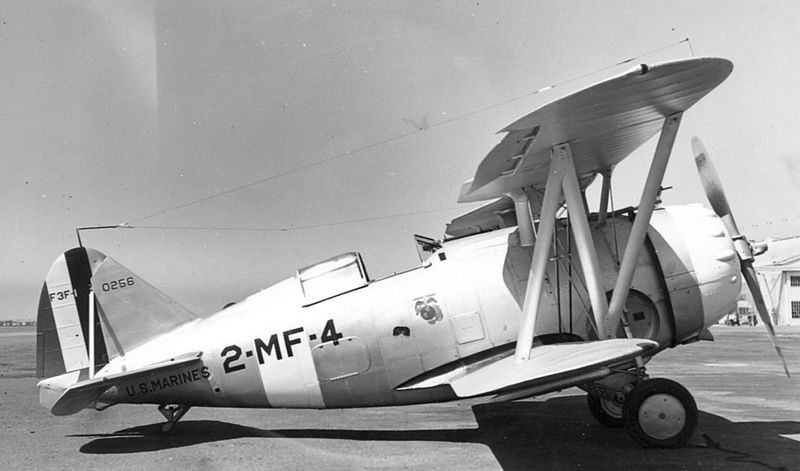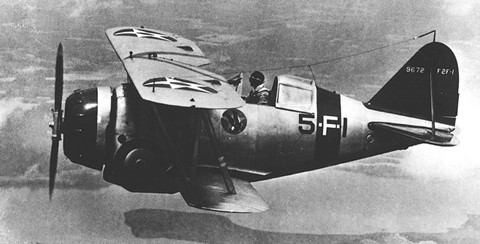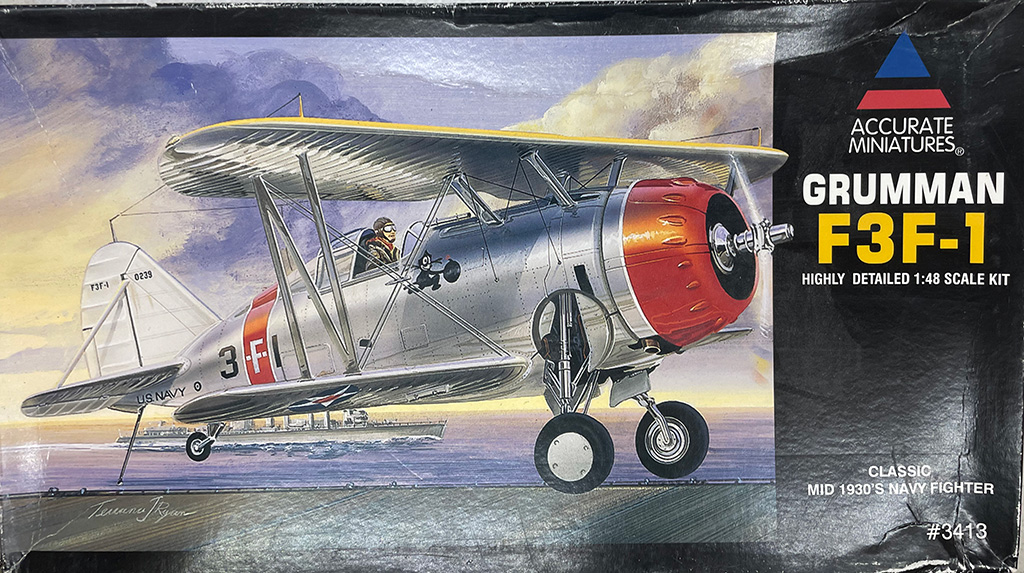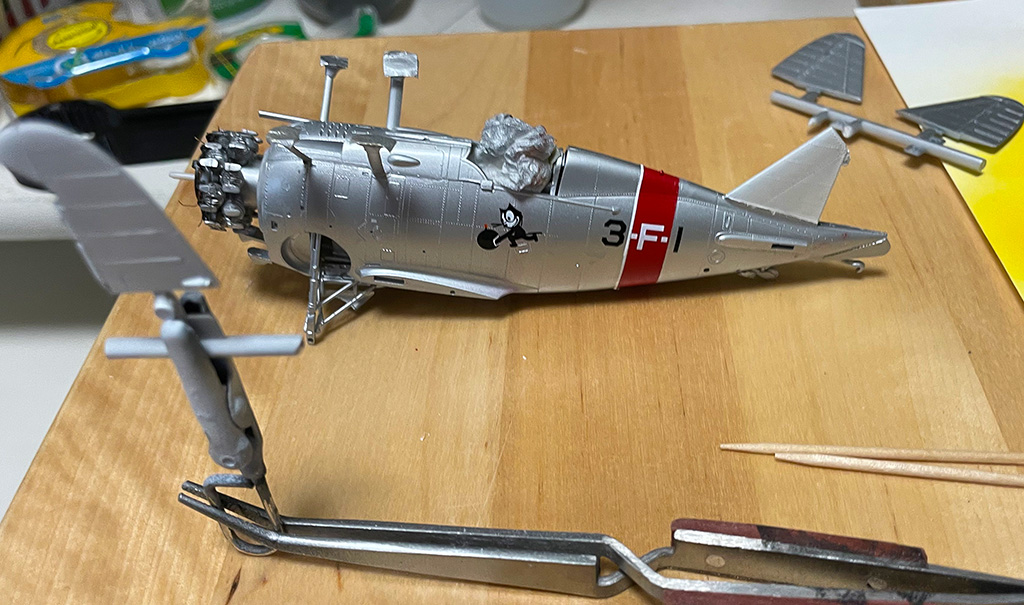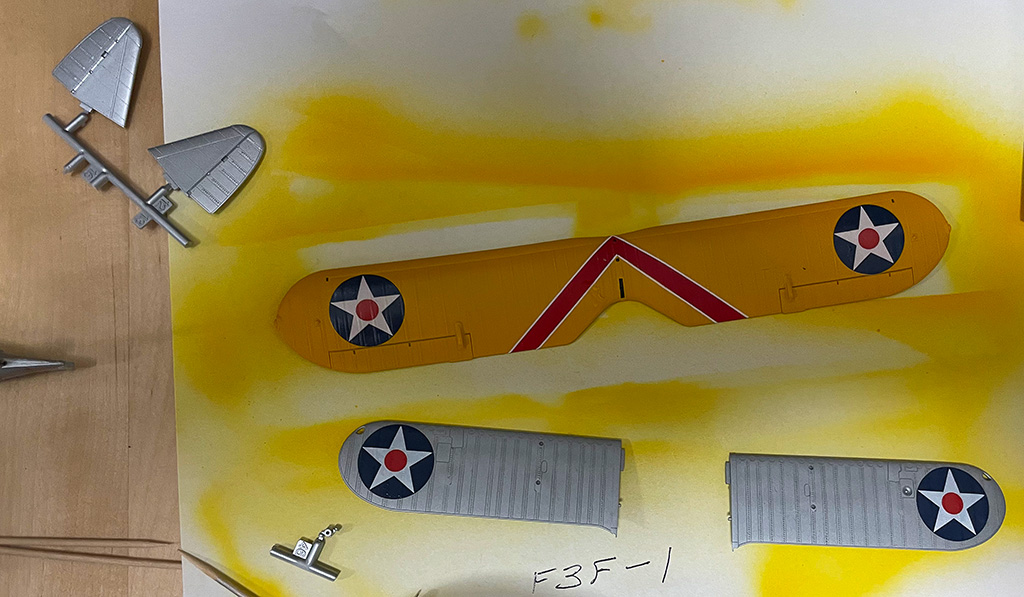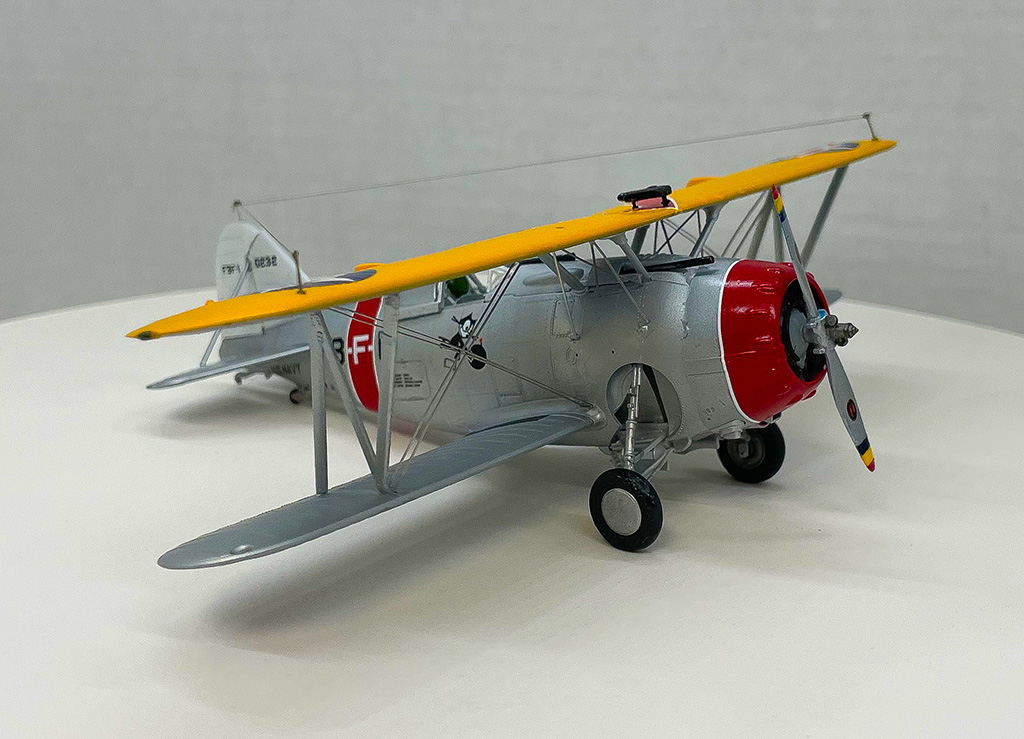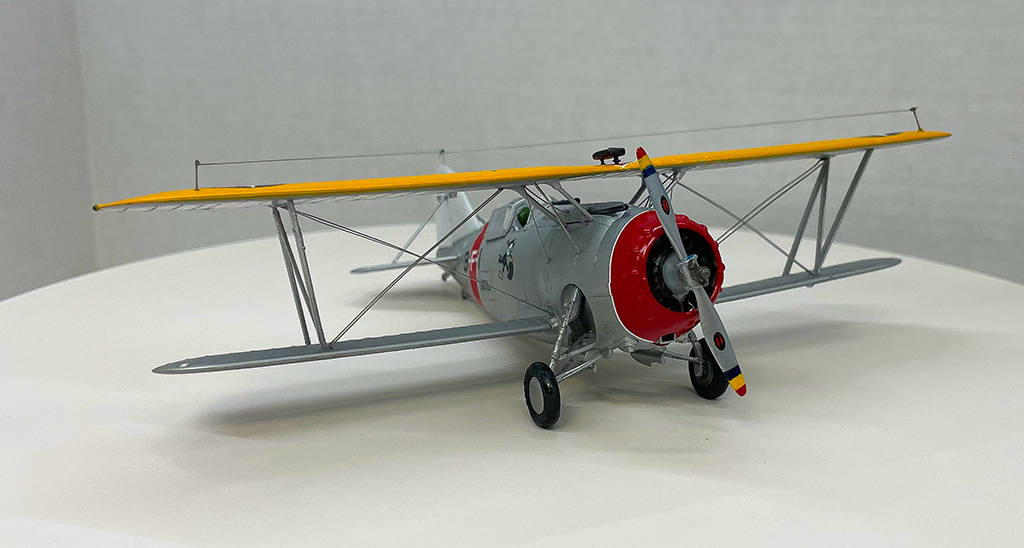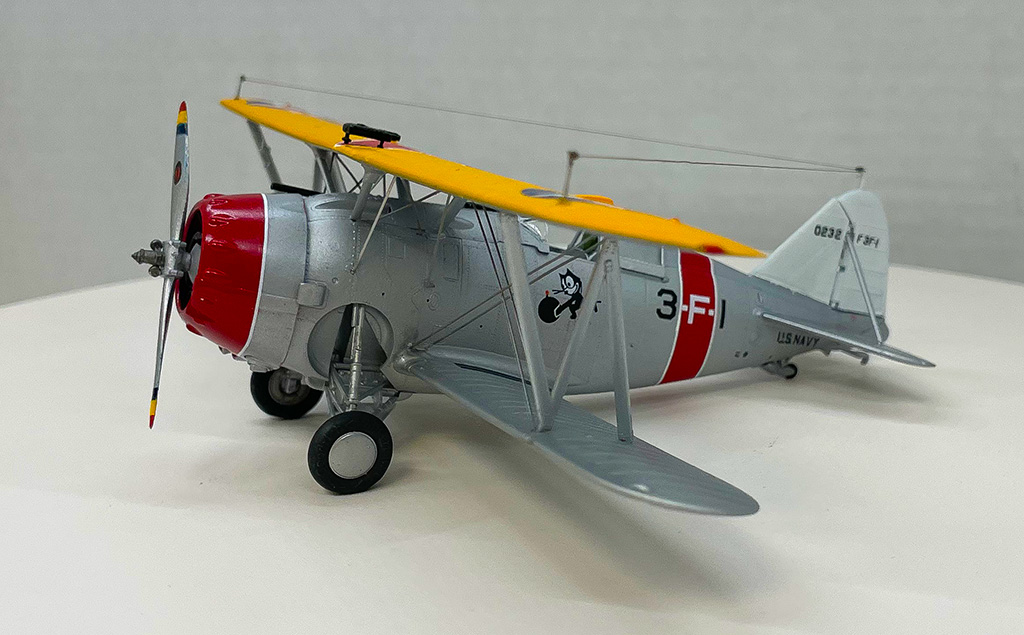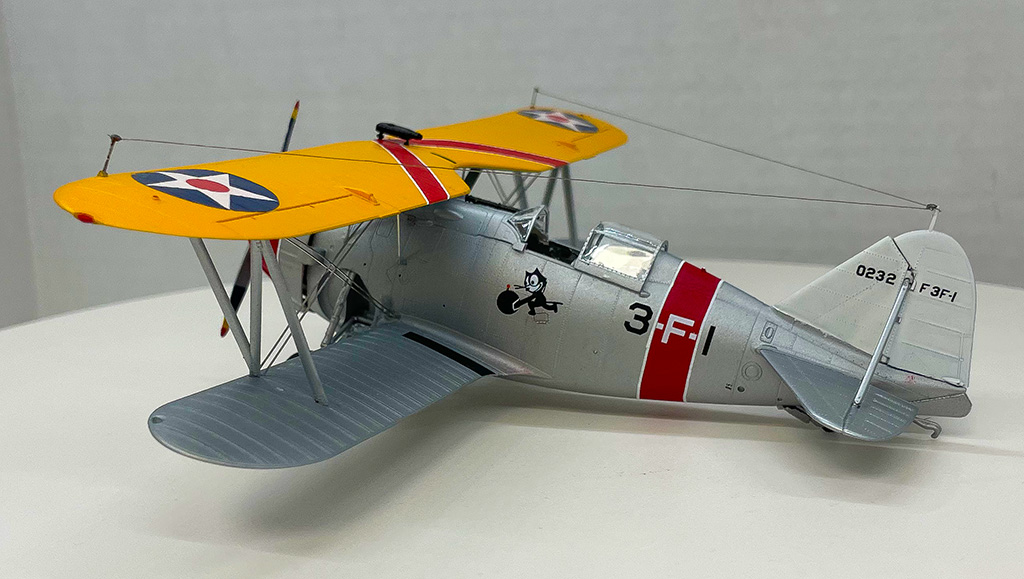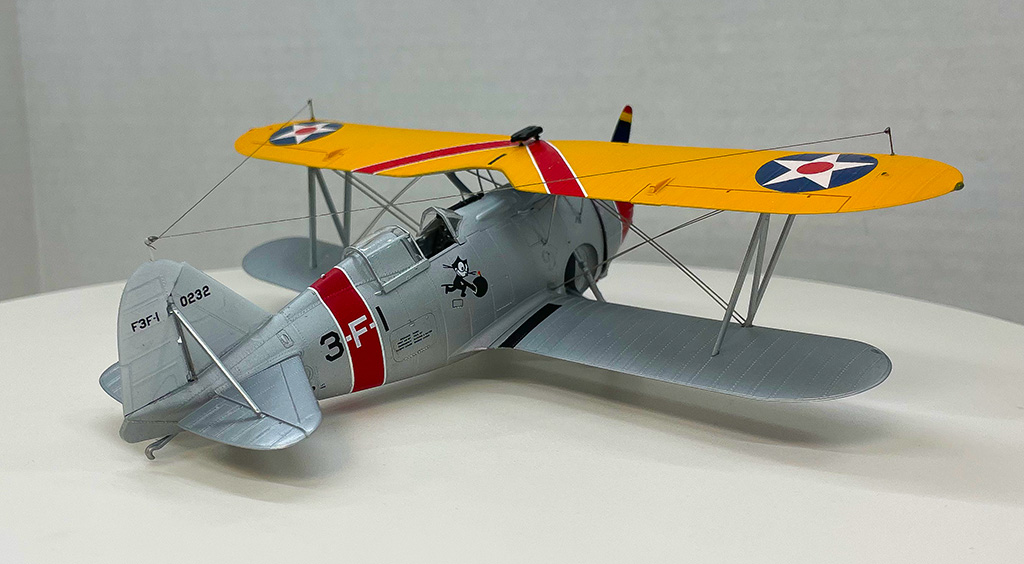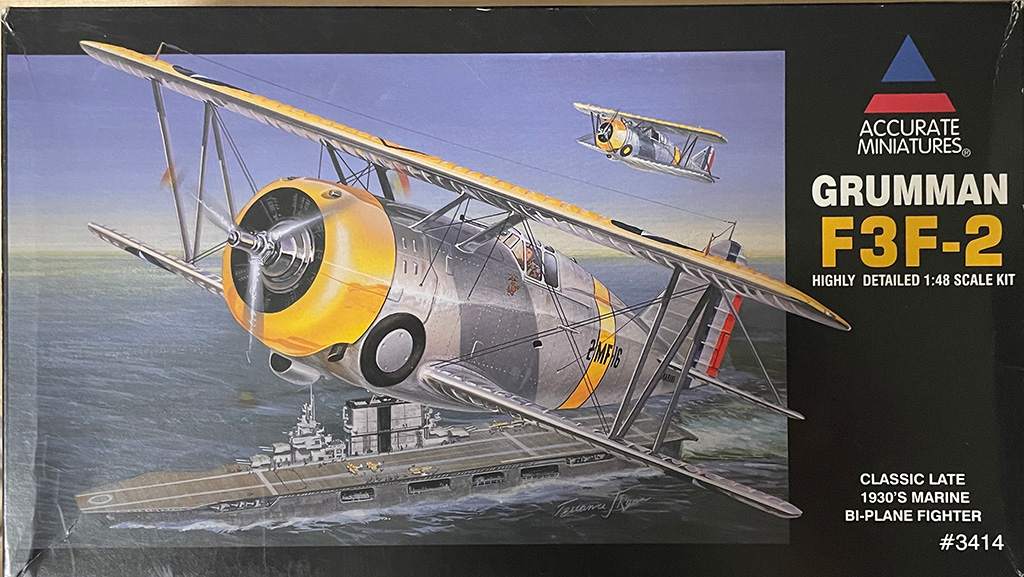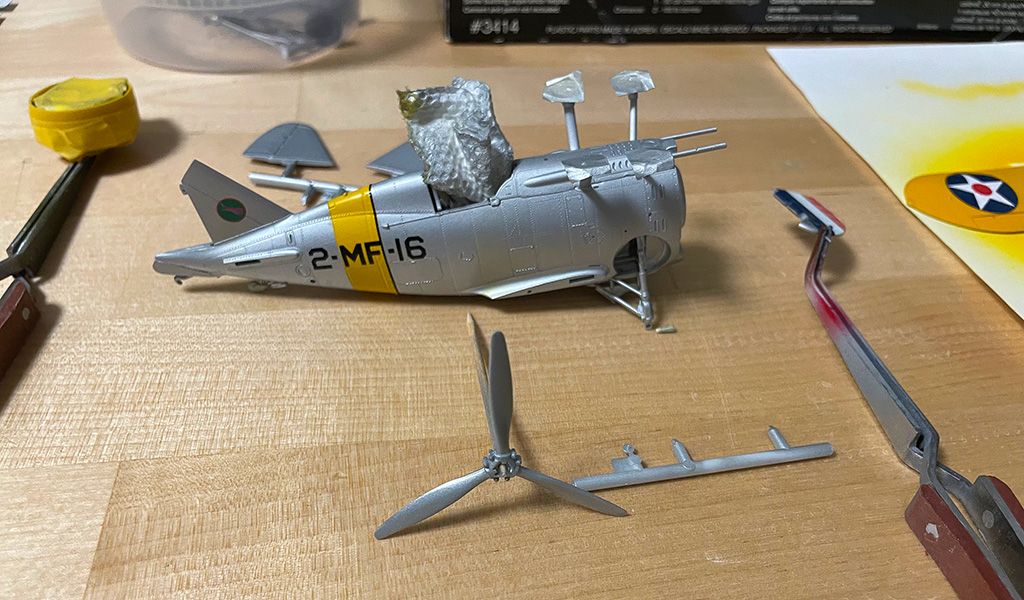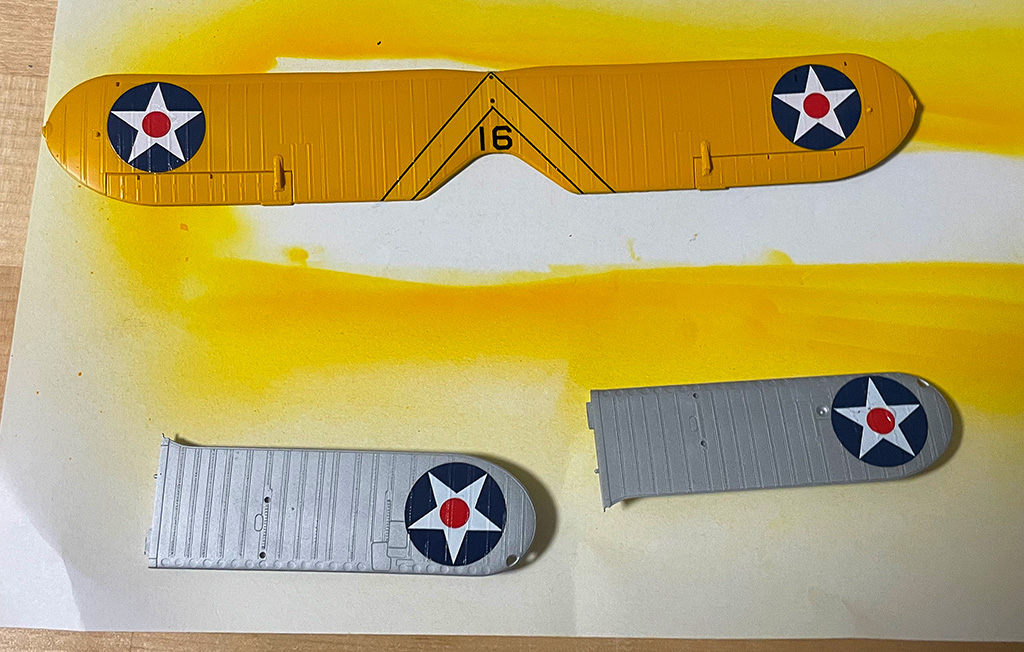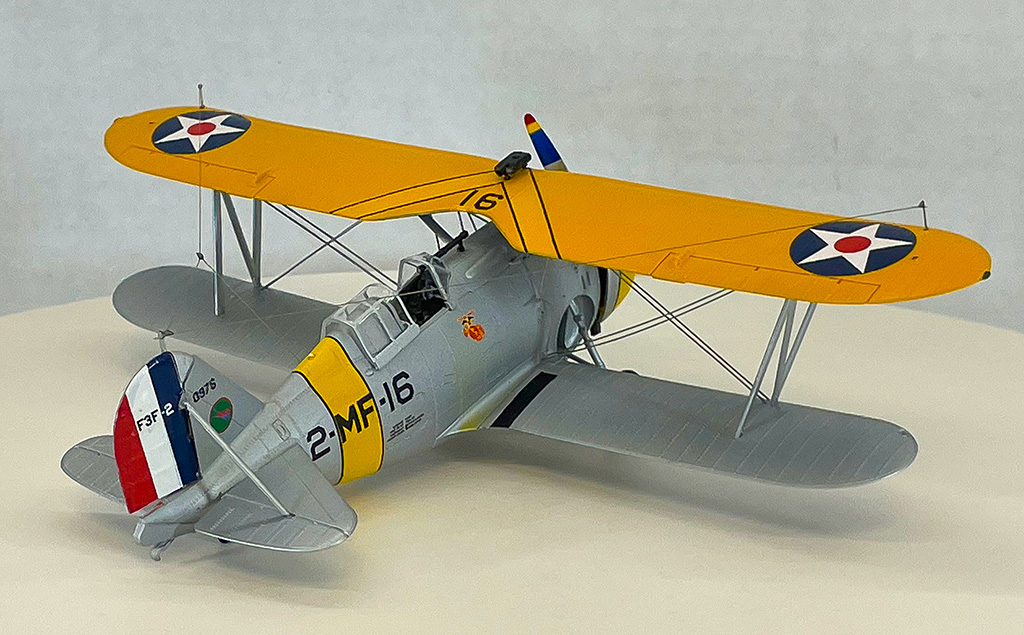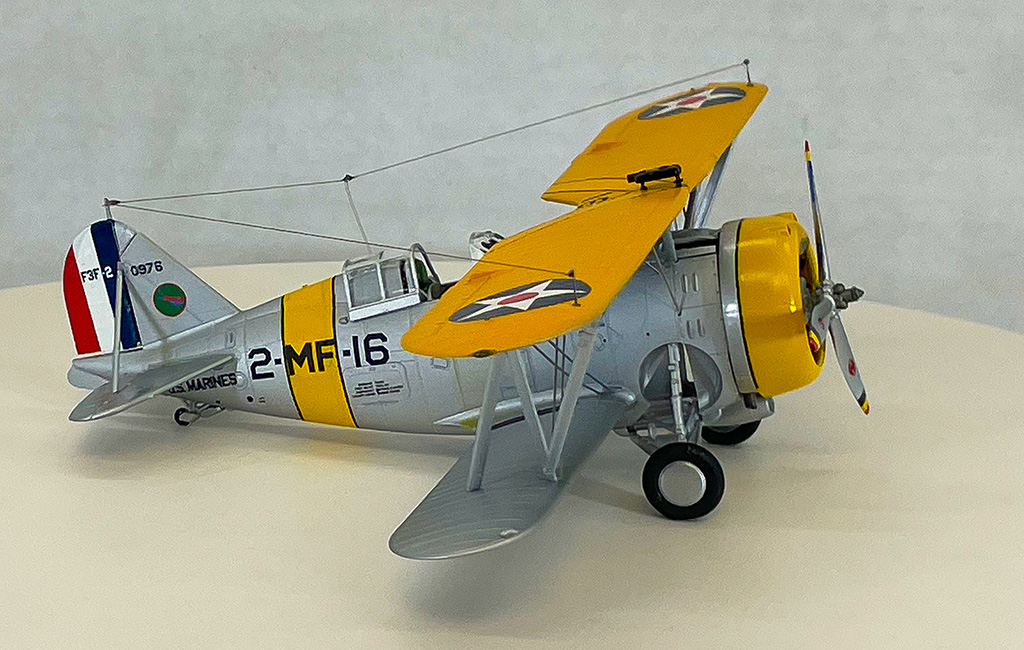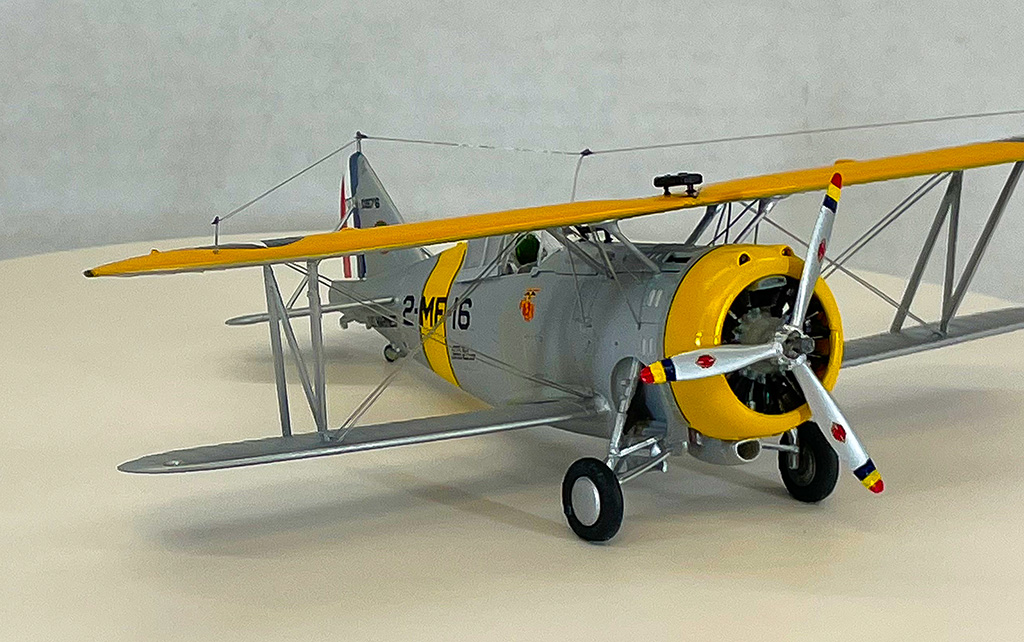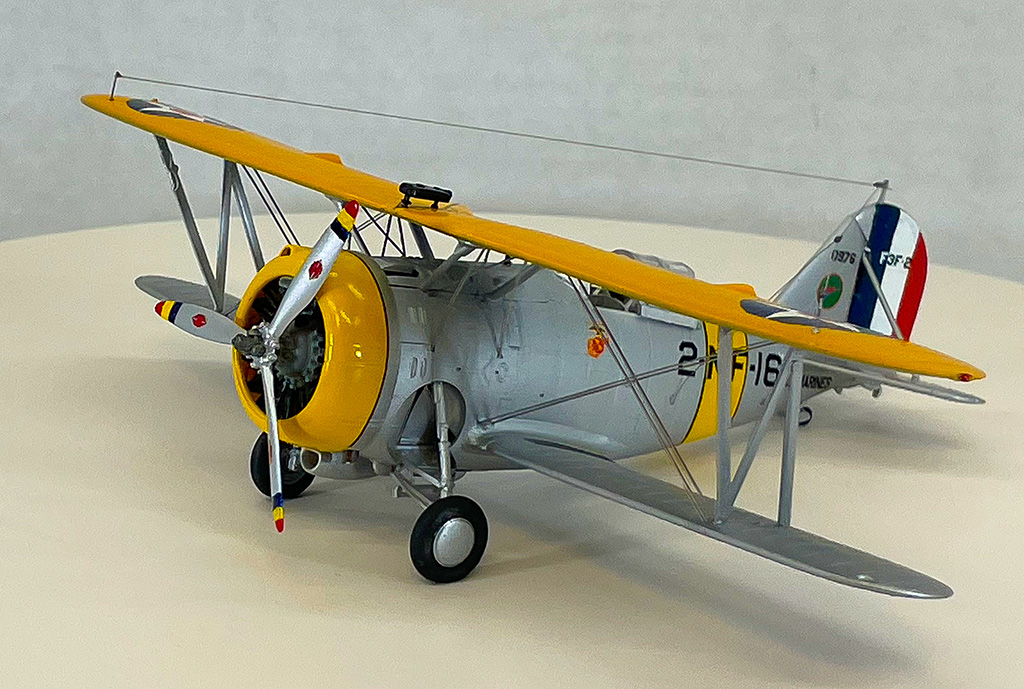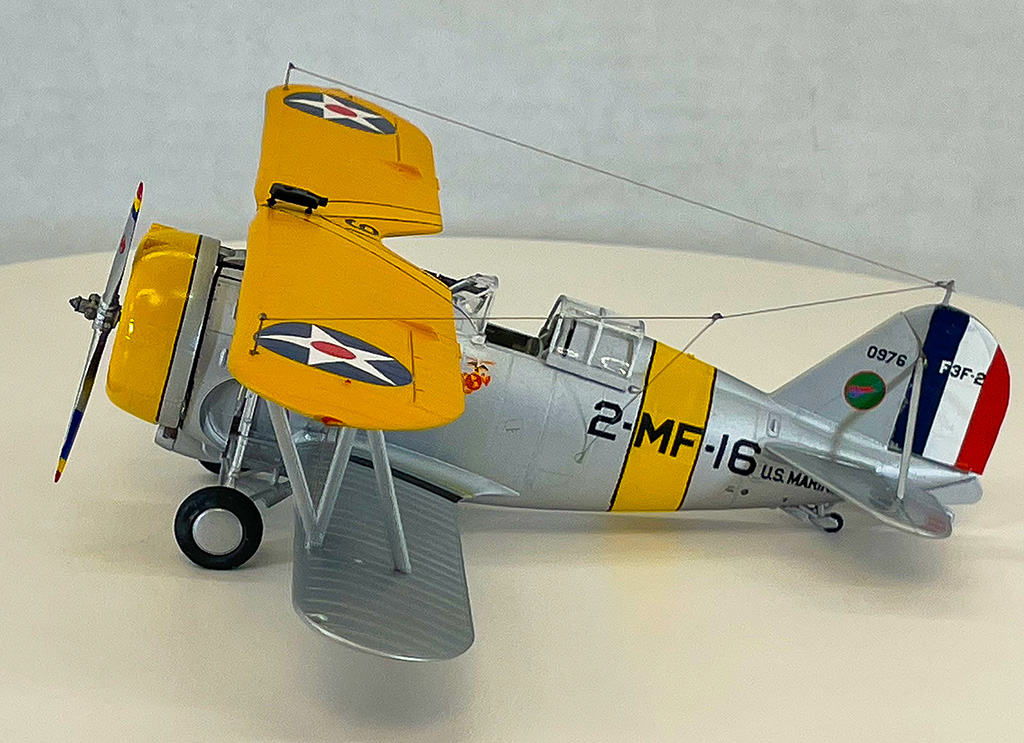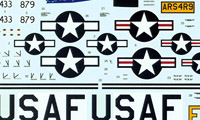9/23/2023. Here is my build of the 1/48 scale Accurate Miniatures Grumman F3F-1 & F3F-2. These are very nice kits and real pleasure to build.
First a little history.
GRUMMAN F3F-1 & F3F-2
The Grumman F3F is a biplane fighter aircraft produced by the Grumman aircraft for the United States Navy during the mid-1930s. Designed as an improvement on the F2F, it entered service in 1936 as the last biplane to be delivered to any American military air arm. It was retired from front line squadrons at the end of 1941 before it could serve in World War II, and replaced by the Brewster F2A Buffalo. The F3F, which inherited the Leroy Grumman-designed retractable main landing gear configuration first used on the Grumman FF, served as the basis for a biplane design ultimately developed into the much more successful F4F Wildcat that succeeded the subpar Buffalo.
The first production F3F-1 (BuNo 0211) was delivered on 29 January 1936 to the test group at Naval Air Station Anacostia, with squadron service beginning in March to VF-5B of Ranger and VF-6B of Saratoga. Marine squadron VF-4M received the last six in January 1937.
Grumman, wanting to take advantage of the powerful new 950 hp (708 kW) Wright R-1820 supercharged radial engine, began work on the F3F-2 without a contract; the order for 81 aircraft was not placed until 25 July 1936, two days before the type's first flight. The engine's larger diameter changed the cowling's appearance, making the aircraft look even more like a barrel, though top speed increased to 255 mph (410 km/h) at 12,000 ft (3,658 m).
The entire F3F-2 production series was delivered in between 1937 and 1938; when deliveries ended, all seven Navy and Marine Corps pursuit squadrons were equipped with Grumman single-seat fighters. Further aerodynamic improvements were made to an F3F-2 (BuNo 1031) based on wind tunnel studies in the NACA Langley 30' x 60' full-scale wind tunnel and became the XF3F-3. It featured a larger-diameter propeller, and a complete revision of the fuselage skinning forward of the aft cabane strut in order to improve aerodynamics and reduce carbon monoxide intrusion. On 21 June 1938, the Navy ordered 27 F3F-3s, as new monoplane fighters like the Brewster F2A and Grumman's own F4F Wildcat were taking longer to develop than had been planned.
With the introduction of the Brewster F2A-1, the Navy's biplane fighter days were numbered. All F3Fs were withdrawn from squadron service by the end of 1941, though 117 were assigned to naval bases (Mainly NAS Miami and NAS Corpus Christi) and used for training and utility duties until December 1943. Wikipedia
Here are videos of the completed models:
